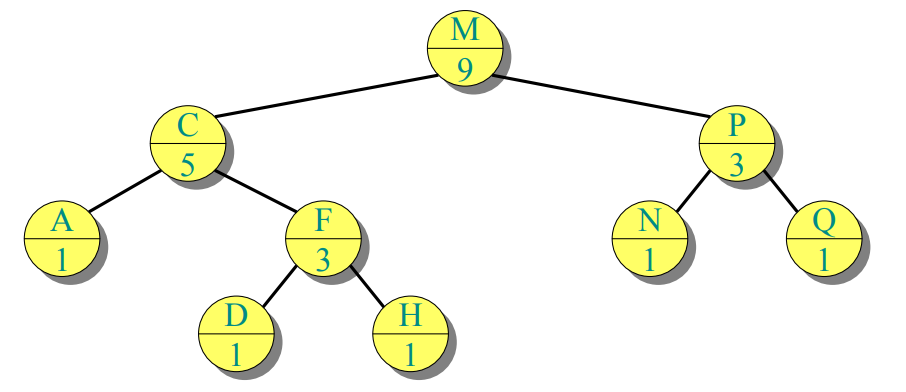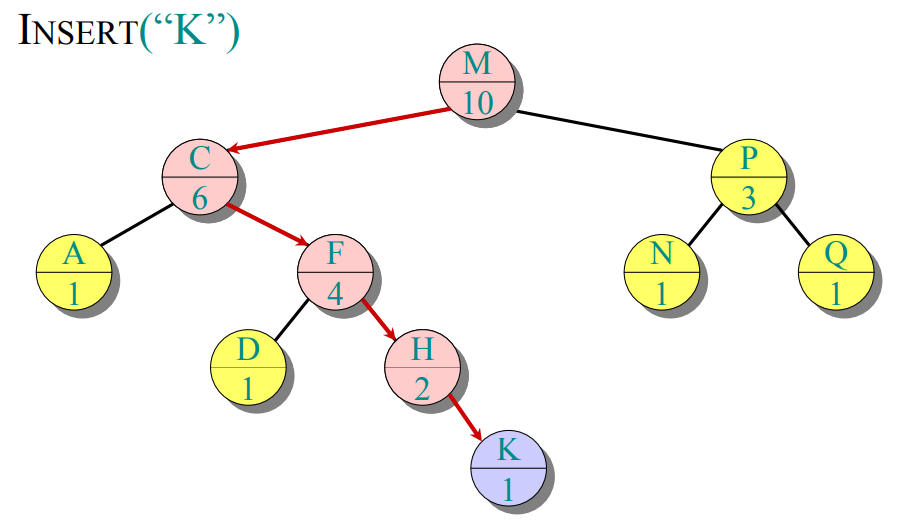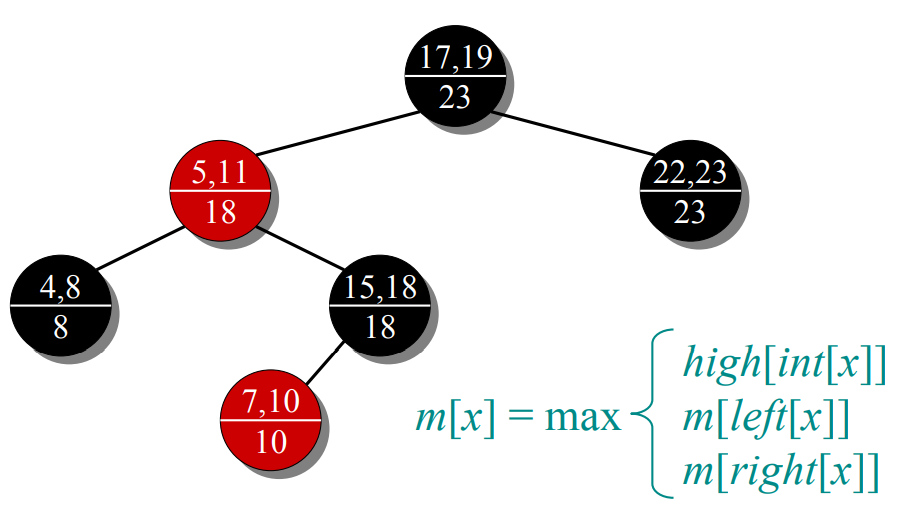扩充的数据结构、动态有序统计和区间树
augmentation data structures 数据结构的扩充
Dynamic order statistics
新增的两个操作:
- OS-Select(i): returns i-th smallest item in dynamic set
- OS-Rank(i): returns rank of x in sorted order.
IDEA : Keep subtree size in node of r-b trees
size[x] = size[left[x]]+size[right[x]]+1
OS-Select(i)
OS-Select(x,i) //i-th smallest in subtree rooted at xr = x.left.size + 1; //rank of xif i==rreturn xelse if i<rreturn OS-Select(x.left,i)elsereturn OS-Select(x.right,i-r)
OS-Rank(i)
OS-RANK(T,x)
r = x.left.size + 1
y = x
while y!=T.root
if y==y.p.right
r = r + y.p.left.size + 1
y = y.p
return r
Analysis T(n)=O(lgn)
Q: Why not keep the ranks in nodes instead of subtree sizes?
A: It’s hard to maintain when t-b tree is motified.
Mutifying operations: Insert and Delete
Stratege : Update subtree sizes when inserting or deleting.
EX:
but also need to handle rebalancing
- r-b color changes: no effect to size
- rotation: look at children and fix up in O(1) time

So, RB-Insert and RB-Delete still run in O(lgn) time
Data-structrue augmentation
Methodology : (e.g. order-statistics trees)
- Choose an underlying data structrue.(red-black trees)
- Determine additional information to be stored in the data structure.(subtree size)
- Verify that this information can be maintained for modifying operations.(RBINSERT, RB-DELETE — don’t forget rotations)
- Develop new dynamic-set operations that use the informations.(OS-Select and OS-Rank)
These steps are guidelines, not rigid rules
Example: Interval trees 区间树
IDEA :maintain a set of intervals. e.g. time intervals
Query : For a given query interval i, find an interval in the set that overlaps i.
Methodology
- Choose an underlying data structure.
(Red-Black Tree key on low(left) endpoint )
- Determine additional information to be stored in the data structure.

Modifying operations:
Insert: fix m’s on way down .Rotations——Fixup = O(1) time per rotation:

So, Total Insert Time = O(lgn) Delete similarDevelop new dynamic-set operations that use the information.
INTERVAL-SEARCH(T,i) x = T.root while x!=nil and (low[i]>high[int[x]] or high[i]<low[int[x]]) // i does not overlaps x if x.left!=nil and x.left.m >= low[i] x=x.left else x = x.right return xList all overlaps: O(klgn) Output sensitive
Correctness
Theorem. Let L be the set of intervals in the left subtree of node x, and let R be the set of intervals in x’s right subtree.
If the search goes right, then
If the search goes left, then
证明略

